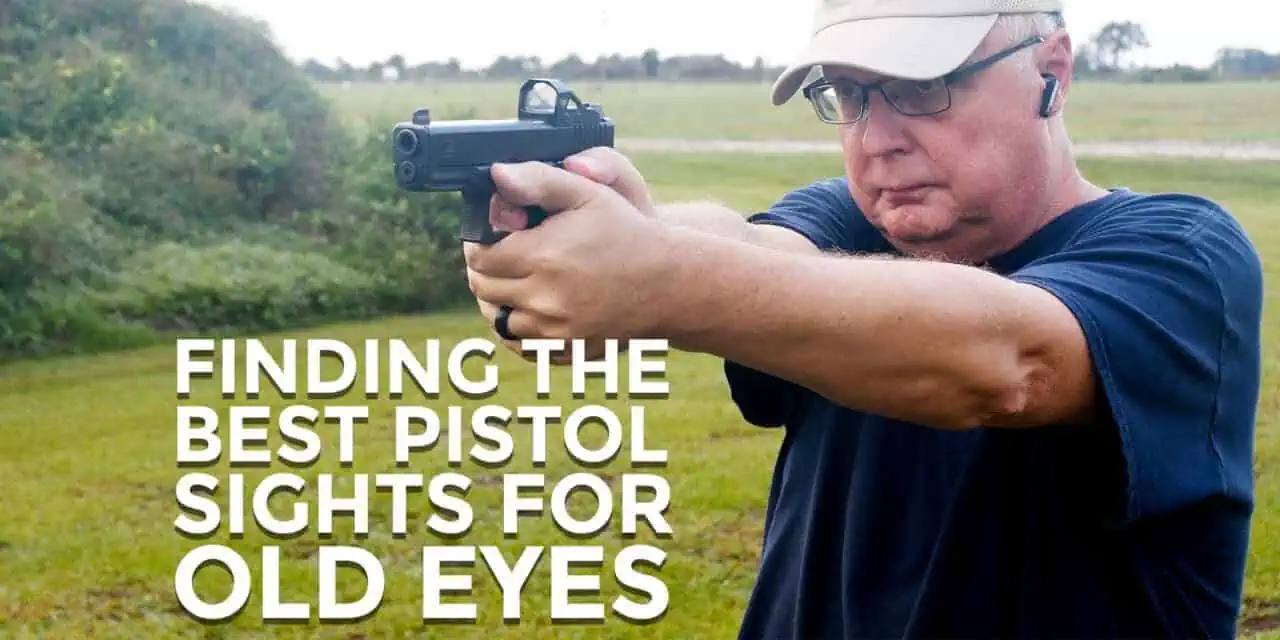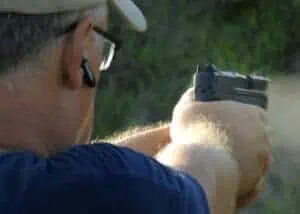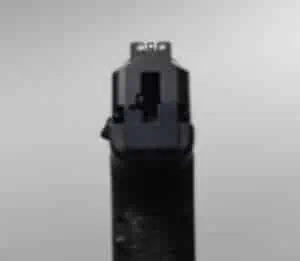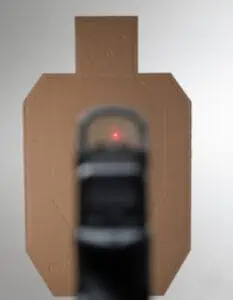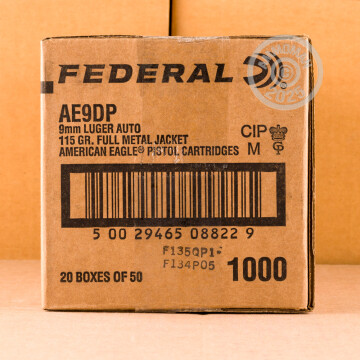Finding The Best Pistol Sights For Old Eyes
It’s a cruel, cruel fact of life that our bodies change as we grow older. Tasks that were once simple for us in our younger years become more difficult as we age. Our eyes are not exempt from these changes, and the optics on our guns should probably change as our eyes change. Finding the best pistol sights for old eyes is a journey, and there is no one right answer for every person.
First, let’s talk about how our eyes change as we grow old. According to the American Optometric Association, the muscles that focus our eyes grow weaker as we grow older. This weakening of the muscles makes it harder for us to focus on objects closer to the eyes. Losing this focusing ability for near vision, called presbyopia, occurs because the lens inside the eye becomes less flexible, and it happens to almost everyone as they grow older.
The weakening of our eye muscles can affect our vision in different ways. Our eyes will probably need more light as we grow older. It can also become increasingly hard to distinguish low contrast objects. The biggest issue most people face as their eyes grow older, though, is seeing objects that are close to us. This is just one of the reasons why finding the best pistol sights for old eyes becomes increasingly important as we age. Let’s take a look at how these problems affect our accuracy with a pistol.
Difficulty in low light situations
Seeing the black riser of a pistol front sight and correctly aligning it in the notch of the rear sight is hard enough when we’re young. As we grow old, that front sight becomes less visible, especially in low light situations. High contrast sights, like Trijicon XD sights or Amerigo tritium sights can help bring the front sight into clearer focus and give you a better sight picture.
Night sights are another option for older eyes, especially ones that have a slightly larger front sight dot than rear sight dots. Low light means poorer vision, especially as you’re growing older, and the bright glow of a tritium dot on your sight can help you acquire the sight picture you need to make the shot.
Three Dot Sights Are Probably Not The Best Pistol Sights For Old Eyes
A common sighting system that is probably not the best pistol sights for old eyes are three dot sights. These sights have one dot (usually white) on the front sight, and two more of equal size and color on each side of the rear sight. Lining all three up in a row gives you proper sight alignment, or so the theory goes. However, focusing on the front sight is a key part of a good sight picture at longer ranges.
Having a dot on the front sight that is the same size, shape and color as the dots on the rear sight tends to confuse our eyes. The three dots look the same, so we have to force our eyes to concentrate on the middle dot, the one on the front sight. This concentration takes time, and time is something that’s in short supply when your life is one the line. In my case, I replace the three dot sights on my guns whenever possible for fiber optic sights or something similar which provide more contrast between the front sight and rear sight.
Other solutions
A weapon-mounted light can be a useful addition to a defensive firearm, especially if you’re having trouble seeing in low light. A light on your gun is not a flashlight for everyday use.It is there to augment the performance of your gun, and that’s all. Make sure you have a second flashlight besides the one mounted on your gun to use if you’ve lost your keys, and save the one on your gun for lighting up bad guys.
The Best Pistol Sight For Old Eyes Just Might Be…
One solution that solves many of these problems all at once is a red dot sight mounted on top of your gun. A red dot optic solves several of the problems we encounter as our eyes grow older. They’re easy to see in low light or at night. They snap into focus right away as you’re looking at your target. Many models of red dot adjust their brightness automatically to the surrounding light conditions. This makes the aiming dot stand out in all kinds of light, solving the problem of distinguishing your point of aim in low-contrast lighting.
There are downsides to red dots, though. First off, they’re expensive. A red dot sight plus the cost of milling the slide to mount an optic can approach the cost of a pistol by itself. This can be mitigated by buying a pistol such as the MOS Glock models which come pre-milled for an optic. This cost savings, though, doesn’t negate the cost of the optic itself.
Secondly, red dot pistol sights require batteries, and those can fade out at inopportune moments. Battery life can be extended with new technologies like solar panels on the sight and “shake awake” on switches, which activate the sight only when it’s in use. Even still, I make it a habit to change the batteries on all my sights every year, no matter how often I use them.
Choose A Sight That Works For You
Lastly, a red dot sight is an electronic device. There has been great strides made these past few years in making heavy use electronics such as pistol sights more reliable. However, even the most solid of systems can break, so having backup sights that can be used if something goes wrong with your dot is probably a good idea.
Is a red dot optic the very best pistol sight for old eyes? I have a number of friends who are getting up in years, and they rely on red dot sights for their defensive firearms. Based on their advice, I also switched over to a red dot this year, and I’m pleased with the results so far. I no longer have to perfectly position my glasses in order to see the sights of my gun. The dot is right there in my field of view as I complete my draw, allowing me to be slightly faster when engaging targets up close, and more accurate with shooting at longer ranges. A red dot may not be right for you, but if you’re struggling to find the front sight as your eyes grow older, it is definitely worth your time to see if it’s the solution you’re looking for.

